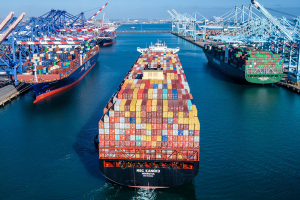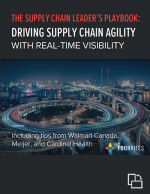Are Your Last-Mile Problems Really Last-Mile Problems?
In this paper, we show how to optimize delivery performance across your first and middle miles using the digital supply chain.
How to Optimize Delivery Performance
Predictable, efficient on-time delivery is getting more and more challenging. It’s also getting more rewarding as bottom-line business performance increasingly depends on great customer experiences, optimized inventory replenishment, lean manufacturing, and the many other operational imperatives that require precision shipping.
Much of this delivery challenge is usually ascribed to the last mile. The last mile is where costs are high, capacity is limited, and the traffic can get really bad. It’s where unloading snafus and unplanned returns happen. And it’s where the customer’s first-hand experience of satisfaction or dissatisfaction ultimately occurs.
The last mile is also where shippers can rack up big wins if they can fulfill or exceed customer expectations - or, in the case of internal supply-chain transport, consistently hit delivery targets - while keeping costs under control.
But what if your last-mile problems aren’t entirely last-mile problems? What if you could take significant pressure off your last-mile logistics by better leveraging your first and middle miles?
That’s one-way smart shippers are leveraging electronic logging device (ELD) data analytics to optimize end-to-end delivery, improve communications across the supply chain - and, by extension, gain competitive advantage.
Three Miles. Endless Challenges
Every shipment travels from point A to point B. Whether you’re delivering consumer products to private residences, retail products to local stores, or raw materials to manufacturing plants, your loads get onto a vehicle in one place so they can eventually arrive somewhere else.
These end-to-end journeys are rarely monolithic. Your cargo may have to traverse interstate highways and congested city streets. It may have to travel on multiple vehicles from multiple carriers. You may need to employ a combination of full truckloads, LTLs, rail, intermodal, and even parcel carriers. You may have to transfer your cargo to one or more distribution points.
It’s generally useful to map out this complex end-to-end journey into three segments:
- First Mile
- Middle Mile
- Last Mile
Download this paper and find out why your objective as a shipper can be understood as managing the first, middle, and last miles of every end-to-end shipment in a way that consistently optimizes outcomes for you and your customers.
What’s Related




Favorites





